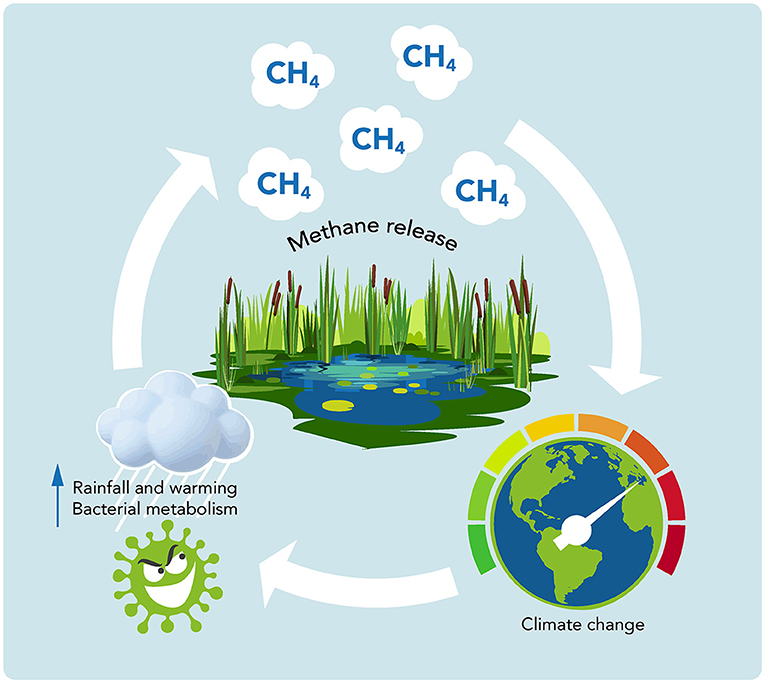Report on Agribusiness Influence on Climate Policy in South America and its Conflict with Sustainable Development Goals
Executive Summary
An investigation reveals a coordinated campaign by major agribusiness corporations to influence climate policy in Argentina, Brazil, Paraguay, and Uruguay. The campaign promotes a new methane accounting metric, Global Warming Potential Star (GWP*), which could allow the livestock industry to increase emissions while claiming to meet climate targets. This effort, spearheaded by researcher Frank Mitloehner with significant corporate funding, directly undermines the principles and targets of several Sustainable Development Goals (SDGs), most notably SDG 13 (Climate Action), SDG 12 (Responsible Consumption and Production), SDG 15 (Life on Land), and SDG 17 (Partnerships for the Goals).
I. The GWP* Metric: A Challenge to SDG 13 (Climate Action)
The core of the campaign is the promotion of the GWP* metric to calculate the climate impact of methane from livestock. This poses a direct threat to achieving the objectives of the Paris Agreement and SDG 13.
A. The Proposed Metric and its Scientific Rejection
- The GWP* metric recalculates methane’s warming effect based on changes in emission rates rather than the total volume of emissions.
- Proponents, funded by agribusiness, claim this better reflects methane’s short lifespan in the atmosphere.
- However, the Intergovernmental Panel on Climate Change (IPCC), the primary scientific body guiding climate policy, has rejected the adoption of GWP* for official reporting. The IPCC notes that the metric fails to capture the total contribution to warming that each methane emission makes.
B. Undermining Climate Commitments
The adoption of GWP* would create an accounting loophole with severe consequences for global climate action:
- Reduced Ambition: Analysis shows that under GWP*, the livestock sectors in Argentina, Paraguay, and Uruguay could increase their methane emissions while appearing to comply with national climate commitments.
- Greenwashing: Companies and countries could claim climate neutrality or even climate cooling effects from minor emission reductions, masking the ongoing warming caused by sustained high levels of methane. This misrepresentation obstructs genuine progress required under SDG 13.
- Offsetting Fossil Fuels: Proponents have suggested that the supposed “cooling” effect could be used to offset emissions from other sectors, such as fossil fuels, further jeopardizing the goal of limiting global temperature rise.
II. A Multi-Stakeholder Partnership Against the Goals (SDG 17)
The campaign illustrates a multi-stakeholder partnership being leveraged to subvert, rather than support, sustainable development. This is a direct contradiction to the spirit of SDG 17, which calls for constructive partnerships to achieve the goals.
A. Key Actors and Funding
- Frank Mitloehner and the CLEAR Center: A researcher at the University of California, Davis, and his research center are central to promoting GWP*.
- Corporate Funding: The CLEAR Center received nearly $3 million from IFEEDER, an organization linked to global agribusiness giants including JBS, Cargill, and Tyson Foods, for a campaign explicitly designed to “rethink methane.”
- Industry Associations: The Global Roundtable for Sustainable Beef and the International Beef Alliance, which include the world’s largest meat producers and lobbies from South America, Australia, and New Zealand, have facilitated Mitloehner’s advocacy.
B. Influence on National Policies
The campaign has actively targeted South American governments, using corporate and public funds to influence policy:
- Paraguay: Following a visit by Mitloehner sponsored by the local chapter of the Global Roundtable for Sustainable Meat, representatives of the Paraguay Rural Association successfully lobbied to include GWP* in the country’s official climate policy submitted to the UN.
- Uruguay: Mitloehner received $9,500 in public funds from Uruguay’s National Meat Institute (INAC) to advise the government. His recommendations included using GWP* for livestock emissions calculations and shaping the country’s foreign climate policy.
- Argentina and Brazil: Mitloehner was invited to speak at events hosted by Argentina’s Rural Society and sponsored by JBS in Brazil, promoting the GWP* metric to industry and government officials.
III. Broader Impacts on Sustainable Development
The push for GWP* and the expansion of the underlying production model have severe implications for other critical SDGs.
A. Threats to SDG 15 (Life on Land) and SDG 12 (Responsible Production)
- The expansion of livestock farming in the region is a primary driver of deforestation in critical ecosystems like the Amazon and the Chaco, directly conflicting with SDG 15’s goal to halt deforestation and biodiversity loss.
- By masking the true climate impact, the GWP* metric promotes an unsustainable production model. This is contrary to SDG 12, which calls for ensuring sustainable consumption and production patterns and requires corporations to adopt sustainable practices and reporting.
B. Risks to SDG 2 (Zero Hunger) and Climate Justice
- Methane is a potent greenhouse gas that contributes to extreme weather events like the floods in Brazil and heatwaves in Argentina and Paraguay. These events threaten agricultural productivity and food security, particularly for smallholder farmers, undermining progress toward SDG 2.
- Analysis suggests that GWP* would disproportionately benefit large multinational corporations like JBS while potentially penalizing small-scale producers in the Global South, exacerbating inequalities and working against the principle of climate justice.
IV. Conclusion
The coordinated effort by agribusiness interests to institutionalize the GWP* metric represents a significant threat to the integrity of global climate agreements and the achievement of the Sustainable Development Goals. It highlights a critical need for transparency and scientific rigor in climate policy, ensuring that actions are aligned with the ambitious targets of SDG 13 and not diluted by corporate-funded campaigns that jeopardize environmental sustainability and climate justice. Effective climate action requires that methane’s impact is accurately measured and that all sectors, including agriculture, are held accountable for their emissions.
Analysis of Sustainable Development Goals in the Article
1. Which SDGs are addressed or connected to the issues highlighted in the article?
The article discusses a multifaceted issue centered on climate change, corporate influence, and agricultural practices, which connects to several Sustainable Development Goals (SDGs):
- SDG 13: Climate Action: This is the central theme of the article. It revolves around efforts to influence climate policies, the measurement of greenhouse gas emissions (methane), the role of the Intergovernmental Panel on Climate Change (IPCC), and the potential jeopardy to the Paris Agreement objectives. The entire narrative about the GWP* metric is a debate on how to take action on climate change.
- SDG 15: Life on Land: The article directly links the livestock industry to deforestation. It states, “To accommodate the vast number of cows… millions of hectares of two key ecosystems in South America had to be burned and deforested: the Amazon and the Chaco.” This highlights the impact of agricultural expansion on terrestrial ecosystems.
- SDG 12: Responsible Consumption and Production: The article critiques the “unsustainable production model” of the livestock industry. It details how large corporations (JBS, Cargill, Tyson Foods) are attempting to change emission calculations, which could allow them to continue polluting under the guise of sustainability. It also references the EAT-Lancet report, which called for transforming eating habits, specifically “eating less meat,” to align with planetary health.
- SDG 17: Partnerships for the Goals: The article exposes how multi-stakeholder partnerships are being used to advance specific corporate interests. It details the funding of the CLEAR Center by an agribusiness-linked foundation (IFEEDER) and the coordinated efforts of the “Global Roundtable for Sustainable Meat” and the “International Beef Alliance.” It also highlights a public-private partnership where the Uruguayan state paid a consultant to promote an industry-favored policy.
- SDG 16: Peace, Justice and Strong Institutions: The article details a “coordinated plan by agribusiness to influence climate policies” in several countries. It shows how lobbying, financed by corporate donors, has successfully influenced official government policy in Paraguay and attempted to do so in Uruguay, raising questions about the accountability and transparency of these institutions. The use of public funds in Uruguay for this purpose further underscores this connection.
- SDG 2: Zero Hunger: The article touches upon the sustainability of food production systems. It notes that the IPCC warns that without changing food production and consumption, climate targets will be missed. It also mentions that failing to reduce methane could lead to the “loss of up to 15 percent of smallholder crops,” directly impacting food security and sustainable agriculture.
- SDG 14: Life Below Water: The article explains the broader environmental impact of methane, noting that “the warming it causes lasts longer, as the heat penetrates the ocean… contributing to sea level rise and putting the planet at risk of flooding, more frequent hurricanes and profound damage to biodiversity.” This connects the issue to the health of marine ecosystems.
2. What specific targets under those SDGs can be identified based on the article’s content?
Based on the issues discussed, the following specific SDG targets are relevant:
- Target 13.2: Integrate climate change measures into national policies, strategies and planning. The article is fundamentally about the attempt to influence and alter these national policies in Argentina, Brazil, Paraguay, and Uruguay by changing the metric used for methane emissions from livestock.
- Target 15.2: Promote the implementation of sustainable management of all types of forests, halt deforestation, restore degraded forests and substantially increase afforestation and reforestation globally. The article directly implicates the livestock industry in the deforestation of the Amazon and Chaco ecosystems, which runs counter to this target.
- Target 12.6: Encourage companies, especially large and transnational companies, to adopt sustainable practices and to integrate sustainability information into their reporting cycle. The article suggests that companies like JBS, Cargill, and Tyson are promoting a metric (GWP*) that could be used for “greenwashing,” allowing them to appear sustainable while potentially increasing pollution, thereby undermining this target.
- Target 17.16: Enhance the global partnership for sustainable development, complemented by multi-stakeholder partnerships that mobilize and share knowledge, expertise, technology and financial resources. The article provides a case study of partnerships (e.g., IFEEDER funding the CLEAR Center) that, instead of promoting sustainable development, appear to be mobilizing financial resources and expertise to protect industry interests against climate action.
- Target 17.17: Encourage and promote effective public, public-private and civil society partnerships. The article highlights a problematic public-private partnership where the Uruguayan state used public funds ($9,500) to hire a consultant who recommended policies favorable to the livestock industry.
- Target 16.6: Develop effective, accountable and transparent institutions at all levels. The successful lobbying in Paraguay to include GWP* in official climate policy, and the use of public funds in Uruguay for a report with predetermined recommendations, challenge the effectiveness and accountability of the government institutions involved.
- Target 2.4: Ensure sustainable food production systems and implement resilient agricultural practices. The article critiques the livestock sector’s “unsustainable production model” and highlights that its methane emissions threaten global climate stability, which in turn jeopardizes agricultural resilience (e.g., potential loss of smallholder crops).
3. Are there any indicators mentioned or implied in the article that can be used to measure progress towards the identified targets?
Yes, the article mentions several quantitative and qualitative indicators that can be used to measure progress (or lack thereof):
- Greenhouse Gas Emission Metrics: The central indicator discussed is the metric used to calculate the climate impact of methane. The debate between the standard metric (GWP100, used by the IPCC for inventories) and the proposed GWP* serves as a direct indicator of how climate change is being measured and reported (relevant to Target 13.2).
- Financial Flows for Lobbying: The article provides specific figures that act as indicators of influence. For example, the “nearly $3 million dollars in direct funding” from the livestock industry to the CLEAR Center and the “$9,500 dollars of public money” from Uruguay to Frank Mitloehner are measurable indicators of financial resources being mobilized to influence policy (relevant to Targets 17.16 and 17.17).
- Inclusion in National Policy: A clear indicator of influence is the successful integration of GWP* into official documents. The article states that representatives “successfully pushed for the country [Paraguay] to consider the use of GWP* in its official climate policy,” which is a concrete, verifiable indicator of policy change (relevant to Targets 13.2 and 16.6).
- Rate of Deforestation: While not providing a specific number, the mention of “millions of hectares” of the Amazon and Chaco being deforested for livestock farming is a qualitative indicator of the failure to halt deforestation (relevant to Target 15.2).
- Impact on Agriculture: The potential “loss of up to 15 percent of smallholder crops” due to unmitigated climate change is a specific, quantifiable indicator of the impact on sustainable food systems (relevant to Target 2.4).
- Corporate Sustainability Claims: The article implies that the adoption of GWP* could allow companies to claim they are “offsetting emissions from other sectors” or achieving “climate neutrality” with only minor reductions. Tracking such claims in corporate sustainability reports would be an indicator of whether companies are adopting genuinely sustainable practices or engaging in greenwashing (relevant to Target 12.6).
4. Table of SDGs, Targets, and Indicators
| SDGs | Targets | Indicators Identified in the Article |
|---|---|---|
| SDG 13: Climate Action | 13.2: Integrate climate change measures into national policies, strategies and planning. | – The specific metric (GWP* vs. standard GWP) used in national climate policy and emissions reporting. – Inclusion of GWP* in Paraguay’s official climate policy submitted to the UN. |
| SDG 15: Life on Land | 15.2: Halt deforestation. | – Area of land deforested for livestock farming (mentioned qualitatively as “millions of hectares” in the Amazon and Chaco). |
| SDG 12: Responsible Consumption and Production | 12.6: Encourage companies to adopt sustainable practices and integrate sustainability information into their reporting. | – Corporate claims of “climate neutrality” or “offsetting” based on the GWP* metric. – The number of large corporations (JBS, Cargill, Tyson) funding campaigns to change emission metrics. |
| SDG 17: Partnerships for the Goals | 17.16: Enhance multi-stakeholder partnerships. 17.17: Encourage effective public-private partnerships. |
– Financial flows from private sector to research/lobbying groups (e.g., “$3 million” from IFEEDER to CLEAR Center). – Amount of public funds used to hire industry-aligned consultants (e.g., “$9,500” from Uruguay). |
| SDG 16: Peace, Justice and Strong Institutions | 16.6: Develop effective, accountable and transparent institutions. | – Evidence of policy recommendations from paid consultants being adopted into official government reports (e.g., Mitloehner’s report for Uruguay). – Official government protests against international climate agreements (e.g., Paraguay’s protest at COP28). |
| SDG 2: Zero Hunger | 2.4: Ensure sustainable food production systems. | – The sustainability of the livestock production model (critiqued as “unsustainable”). – Projected loss of agricultural output due to climate change (e.g., “loss of up to 15 percent of smallholder crops”). |
| SDG 14: Life Below Water | 14.2: Protect and restore ecosystems. 14.3: Minimize ocean acidification. |
– Impact of methane-induced warming on oceans (mentioned as heat penetration, contributing to sea level rise and damage to biodiversity). |
Source: sentientmedia.org






